BARBARA ROSE
Barbara Rose (1936-2020). Art critic and historian Barbara Rose—who helped define the major art movements of the latter half of the twentieth century, and who consistently defended the medium of painting against reports of its obsolescence—died on Friday at age eighty-four from cancer. Distinguished by a perspicacity and openness in exploring postwar art and its contradictions, Rose’s prolific writing and interviews form a key contribution to the art history of the United States and beyond. After coming to prominence in 1965 with a landmark essay in Art in America titled “ABC Art”—which began to codify what would eventually be known as Minimalism, but whose influence its author would come to dismiss—Rose spent the next fifty years as a reviewer and contributing editor for publications including Art International, Art in America, Vogue, the Partisan Review, New York Magazine, and Artforum, where she wrote on and off for more than five decades on such topics as art and politics, erotic figuration, Helen Frankenthaler, and the late style of Georgia O’Keeffe. Her books include American Art Since 1900 (1967) and Autocritique: Essays on Art and Anti-Art, 1963–1987 (1988).
Born in Washington, DC, in 1936, Rose was educated at Smith College and Barnard before going on to earn a doctorate at Columbia University, where she studied under Meyer Schapiro, and later attended the Sorbonne in France. Through cinematographer Michael Chapman, she was introduced to artists Carl Andre and Frank Stella, whom she would marry in 1961 during a Fulbright scholarship in Spain. Before divorcing in 1969, they had two children, who survive Rose along with her fourth (and first) husband, Richard Du Boff. She soon became a fixture of the rapidly changing New York art world of the 1960s, and began writing at the suggestion of critic Michael Fried, whose formalist approach Rose, then a correspondent for Art International, originally embraced. With “ABC Art,” she set the terms of debate for the new work being made by a small circle of artists in downtown New York, objects whose “self-effacing anonymity,” she wrote, could be seen “as a reaction against the self-indulgence of an unbridled subjectivity, just as one might see it in terms of a formal reaction to the excesses of painterliness.”
The essay—which provided a historical origin for the work of Andre, Donald Judd, Robert Morris, Dan Flavin, and their contemporaries in a “curious synthesis” of Malevich and Duchamp—signaled Rose’s shift away from Greenbergian analysis, a break further articulated in her Artforum essays “Abstract Illusionism” (1967) and in a multipart polemic published in the magazine’s “Problems of Criticism” series from February 1968 to May 1969. “Greenberg identifies radicality not in terms of the role and function of art, but as a progressive internal development—regardless of public or critical acceptance or rejection,” she wrote in the second of three articles. “For him, radical form, not revolutionary function, is the hallmark of the avant-garde. Thus Greenberg is able to reconcile a decorative style that serves the middle class as embellishment and investment commodity with a concept of immanent radicality.”
In addition to writing, Rose taught at institutions including Yale University and the New School; was the first to direct the museums at the University of California, Irvine (from 1970 to 1971); and curated several high-profile exhibitions. Among these was the assuredly titled 1979 exhibition “American Painting: The Eighties,” a show at Grey Art Gallery whose forty-one artists, among them Susan Rothenberg and Elizabeth Murray, had stuck with painting despite repeated soundings of its death knell. In 1983, while directing the Museum of Fine Arts, Houston, Rose organized the first retrospective for Lee Krasner, a year before the painter’s passing. More recently, Rose orchestrated “Painting After Postmodernism” (2016), a dialogue between Belgian and American artists whom she saw as reinvigorating the medium’s purpose in the digital age. In an Artforum interview, Rose spoke on behalf of the included artists, and perhaps herself, in regard to their worldview, namely “that we live in an extremely unstable and changing time, and that the problem of life, which can be expressed in painting, is a search for equilibrium in this fluctuating landscape.”
Barbara Rose: https://www.artforum.com/news/barbara-rose-1936-2020-84747
Important Shows
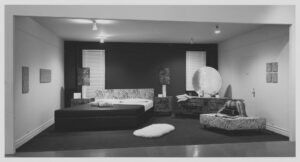
Claes Oldenburg (1969)
Abstract Painting: The Eighties (1979)
Joan Miró in America (1982)
Fernand Léger (1982-83)
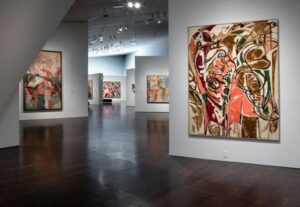
Lee Krasner, A retrospective (1983)
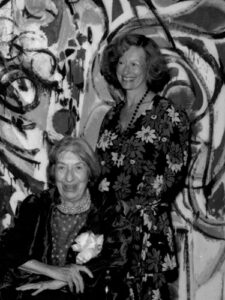
Barbara Rose with Lee Krasner at the opening of “Lee Krasner: A Retrospective,” Museum of Fine Arts, Houston, October 27, 1983
Abstract Painting: The ’90s (1992)
Painting After Postmodernism (2016)
Publications
Barbara Rose (1965): “Filthy Pictures: Some Chapters in The History of Taste”, ArtForum, May, https://www.artforum.com/news/barbara-rose-1936-2020-84747
Barbara Rose (1965): “ABC art”, Art in America, October-November
Barbara Rose (1965): “How to Murder an Avant-Garde”, ArtForum, November, https://www.artforum.com/print/196509/how-to-murder-an-avant-garde-36911
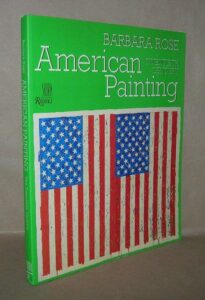
Barbara Rose (1966): American Painting: The Twentieth Century. Geneva: Skira
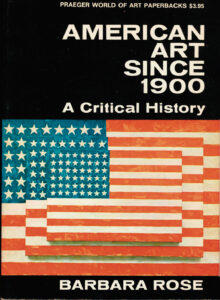
Barbara Rose (1967): American Art Since 1900: A Critical History. New York: F.A. Praeger
Barbara Rose (1967): “Abstract Illusionism”, ArtForum, October, https://www.artforum.com/print/196708/abstract-illusionism-36697
Barbara Rose (1969): The Golden Age of Dutch Painting. New York: F.A. Praeger.
Barbara Rose (1969): “Painting Within Tradition: The Career of Helen Frankenthaler”, ArtForum, April, https://www.artforum.com/print/196904/painting-within-tradition-the-career-of-helen-frankenthaler-36502
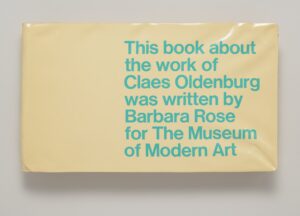
Barbara Rose (1970): Claes Oldenburg, Greenwich, Conn.: Museum of Modern Art
Barbara Rose (1970): “Georgia O’Keeffe’s Late Paintings,” ArtForum, November, https://www.artforum.com/print/197009/georgie-o-keeffe-s-late-paintings-37752

Barbara Rose (1975): Readings in American Art, 1900-1975, Connecticut: Praeger Publishers
Barbara Rose (Ed.) (1975): Art as Art: The Selected Writings of Ad Reinhardt, New York: Viking Press
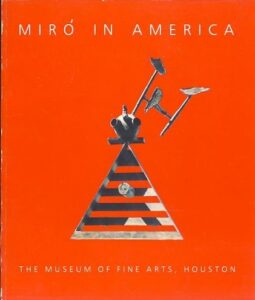
Barbara Rose, Joan Miró, Judith McCandless, Duncan MacMillan (1982): Miró in America, Houston, TX: Museum of Fine Arts
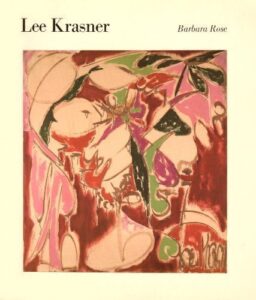
Barbara Rose (1983): Lee Krasner: A Retrospective. Houston: Museum of Fine Arts
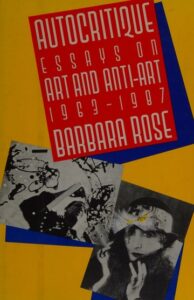
Barbara Rose (1988): Autocritique: Essays on Art and Anti-Art, 1963–1987, New York: Weidenfeld & Nicolson
Interesting Links
Alexandra Anderson, Barbara Rose, and Hal Bromm on the work of Rosemarie Castoro: Barbara Rose. Master Class: https://www.youtube.com/watch?v=cvKDZ24yHVw
Painting After Postmodernism | Belgium – Usa: https://www.youtube.com/watch?v=nZd3szbrmr0
NSE #258 | A Tribute to Barbara Rose: https://www.youtube.com/watch?v=yXKFEqXWGbs
Robert Morris in Conversation with Barbara Rose: https://www.youtube.com/watch?v=a_eDNrbvLzc
Alexandra Anderson, Barbara Rose, and Hal Bromm on the work of Rosemarie Castoro
